ACTION ONE
Starting From the Ground
What is my sense of place?
In order to understand the space I inhabit, I must first understand the history, stories, and modern myths of the place itself.
I was born and raised in Calgary, AB – On the Treaty 7 territories of the Blackfoot Confederacy, the Tsuut’ina Nation, and the Métis Nation. I cannot fully understand my sense of place without knowing the ongoing history of white supremacy and racial discrimination in my hometown, and the rest of Canada; and the role that I have unconsciously played in those systems. In order to actively participate in helping design for a decolonized and equal world, I need to acknowledge the both systematic issues in place, and the privilege I have had within these systems.
On a less serious note there are certain things that define who I am, and what drives me. I have always been passionate about the outdoors, which has in turn shaped my work to be ecologically-centric. with a large focus on sustainability and green design. I’m also passionate about music and art history, music creation, and movies. and I try to approach everything I do with a sense of humour, and a minimal ego. I love working with my hands, and using different forms of making to research ways of design.

ACTION TWO
Terroir, an Offering
How to share a piece of myself through designing an experience.
For action two I was paired up with Elham to discuss how we could share an edible experience with each other that tells the other person about our life, our culture, and how we interact with our loved ones in a performative or planned nature. We initially met and exchanged instructions on how we could each experience a meal from the other person’s culture.
For my offering, I sent Elham a recipe for Cauliflower wings, a favourite among my friends and family. I also sent a playlist I put together. To me music is a key element of a gathering, and the food itself is more of an excuse to have the people you love be together to share a meal.

For Elham’s offering for me she sent me a traditional Persian recipe called Abdoogh Kiar. She also included the history of the dish:
“Narration is that in the time of Nasser al-Din Shah Qajar peasants worked for Shah
(King) and they were really poor and unsatisfied. One day Amir Kabir, who was the chief
minister of Nasser al-Din Shah, became really anxious about extravagance with foods of the
royal court and poverty of peasants. He suggested Shah to eat what peasants usually eat.
Shah asked: “What do our peasants eat?”
Amir said: “yogurt and cucumber (Abdoogh Khiar)”
The King called the chef and ordered the food for tomorrow’s lunch.
The food was prepared and Shah started eating the food. After eating a large bowl of
the soup, he asked for another bowl. While eating, he returned to Amir Kabir and said “what
a FOOD do our peasants eat and we weren’t aware of”. And continued: “imprison whoever
was unsatisfied with his life and his blessings”.


ACTION THREE
Extending and Seeking
Extending my studio space beyond the screen
The nature of the online studio is one of intimacy. Every time we meet as a group we are projecting to each other an image of our homes, of our own personal spaces. More often than not this projection is consistent and controlled. The same camera view of someone from their desk, their kitchen table, their bedroom, but sometimes you get more of a glimpse into their life. Whether it be their kids barging into a home office, or a cat walking across a keyboard. When thinking about this action, my main goal was how I could present my own space from a perspective that goes beyond the constraints of a camera angle, and shows me in my space on a more intimate level.

Modeling my own space allowed to me project this area of intimacy through the limitations of the screen, It also gave me the opportunity to realize the nature of my space from a 3rd person perspective.
ACTION FOUR
Step out and Look Wider
Defining sustainability through acts of making
Sustainability is a tough thing to define through acts of making without being overly symbolic. In a way it seems strange to use materials that were ultimately conceived from the natural world in order to better understand a concept imbedded in protection and conservation. This dilemma in turn makes it difficult to fabricate a representation of what sustainable design should embody. A solution I found to help create a representation of sustainable design dialogues is to explore forms of making and diagraming in a natural setting. Take for example, this forested area that I designated to be my “site”.
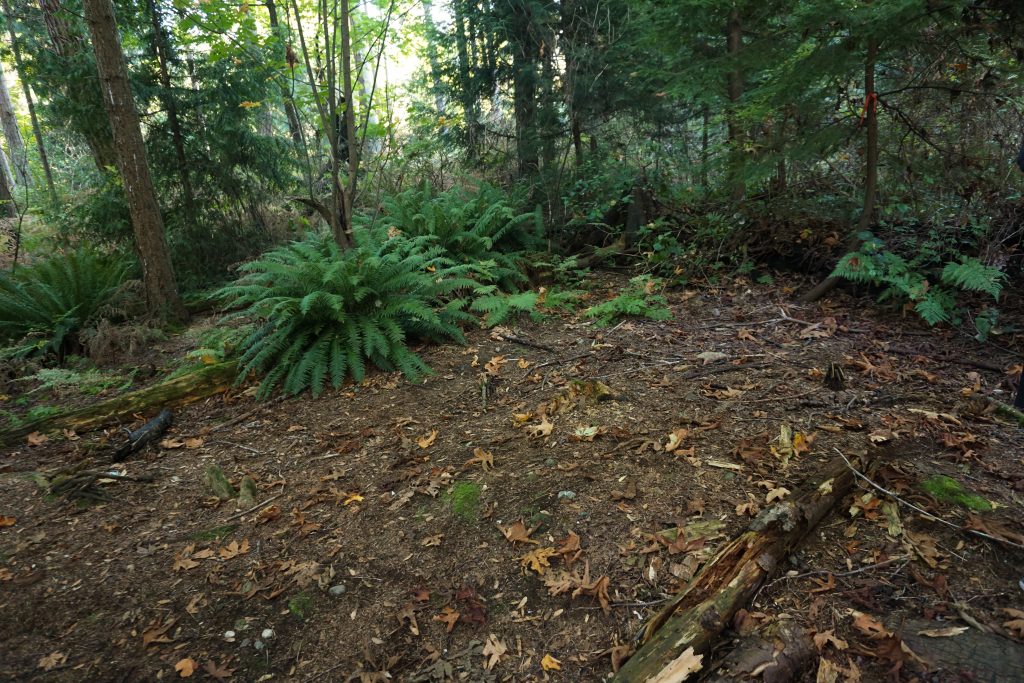
The most intriguing part of this setting in particular, is the diverse colors and textures found in the area. These singular elements are each interesting in their own isolated context, but taken together they are what collectively give life to this space. Singling out each of the leaves, plants, fungi’s, etc. allows you to realize what elements make up this space, and then gives you a more descriptive view of the area.
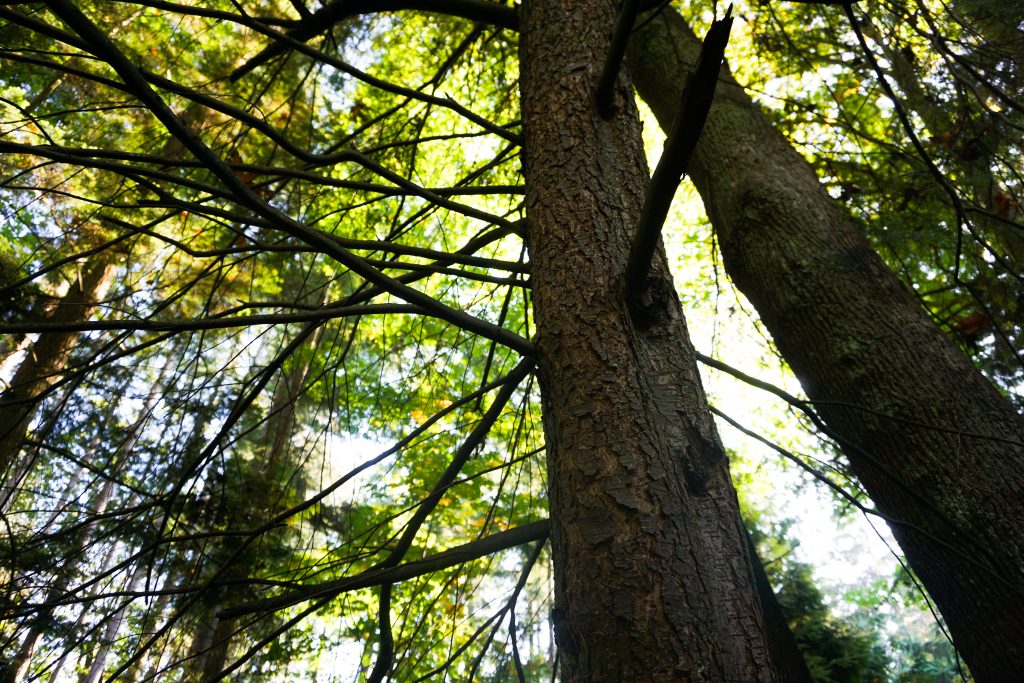

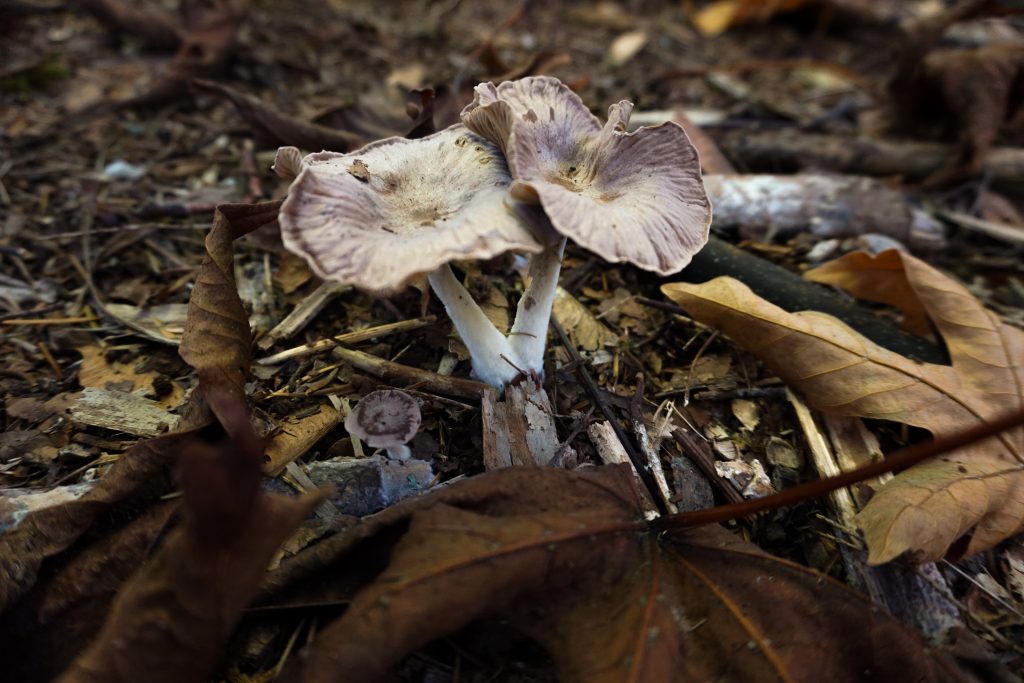
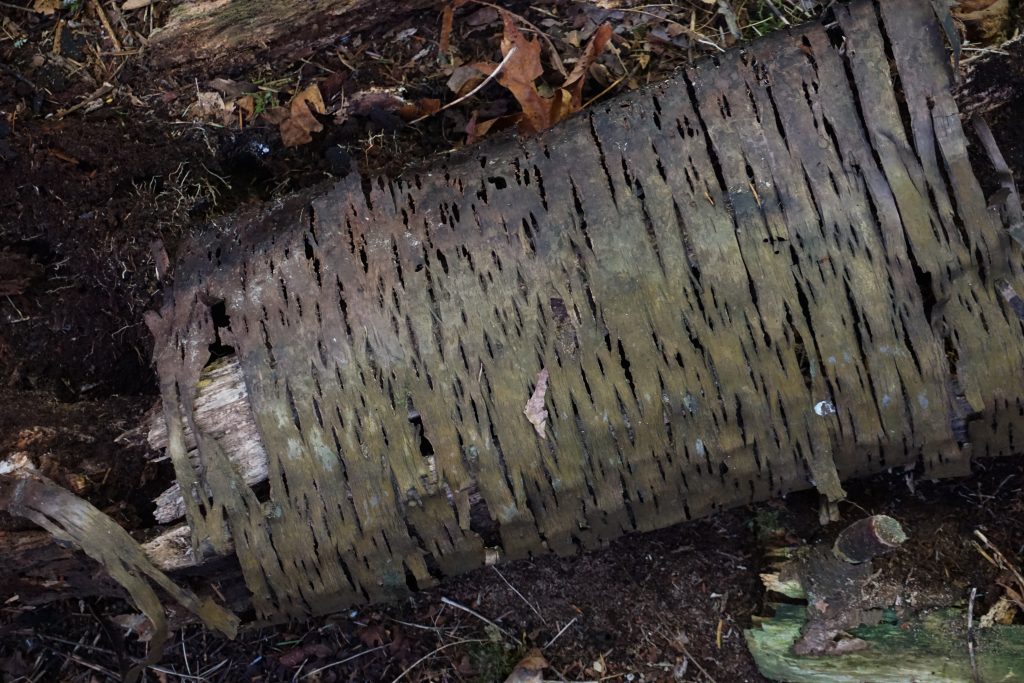
An issue that I tend to have with a lot of designers’ takes on sustainability, is that sustainability is not a core aspect of the design. Some designers will only consider elements of sustainability as an afterthought or a finishing touch to their product, rather than having the idea be incorporated from the beginning. To me, the relationship should be flipped. Rather than considering the sustainment of the natural world to be a restriction on what you can and can not design, consider it a guideline for your entire process. Do not design for nature, design with nature. For my actual action, I attempted to represent this in my chosen site. In order to represent the relationship of designing for and designing with, I did both acts in one action. The design for nature act is to clear the area of these diverse natural objects and achieve a constant, homogenous zone. The act of designing with nature, is to show this zone in direct contrast with the intriguing options of the found natural objects.
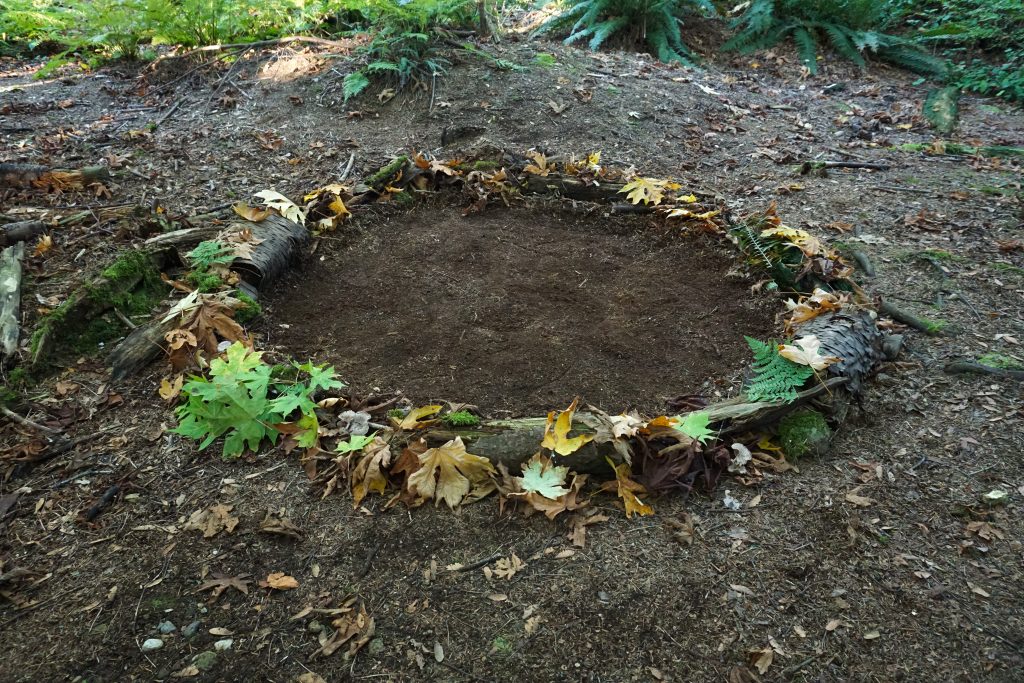
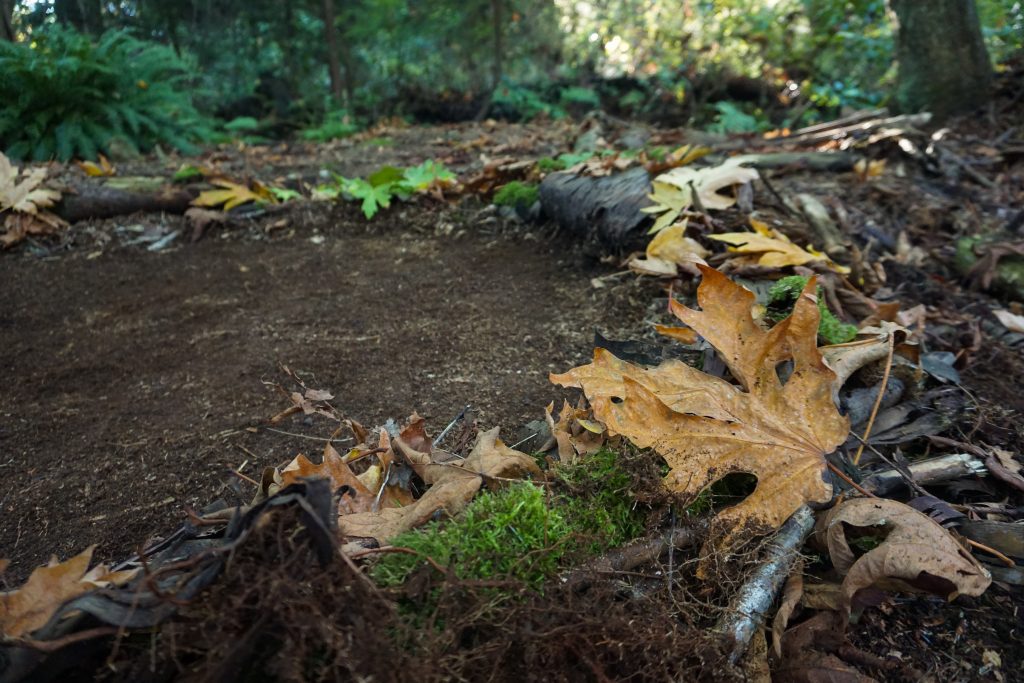
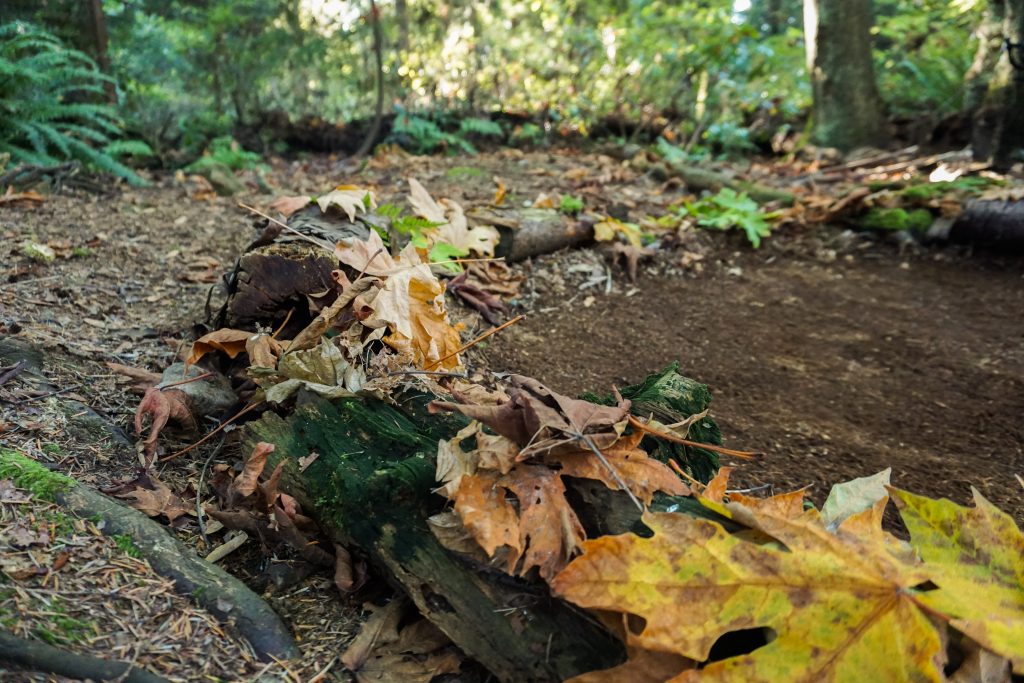
This contrast acts as a diagram for sustainable design. Rather that creating something using the natural world as a barrier for design, think about the natural world as a tool to shape your design. If this action tells us anything, it is that whatever you make to contrast with the natural world cannot possible have the same level of formal intrigue as the natural world itself.
ACTION FIVE
Video Sketching
Exploring the fragility of mental health
ACTION SIX
Action 6 – The Fix
I will investigate adaptive re-use and materiality by re-furbishing and re-making an object of lost value.
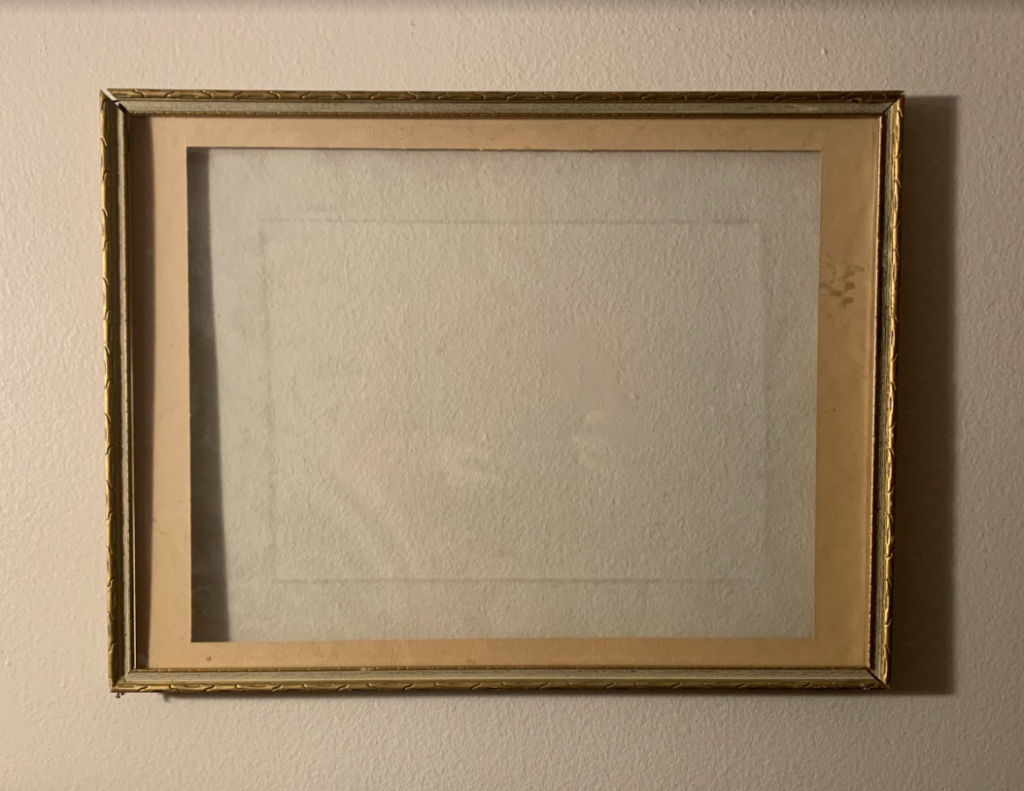
Picture this (pun intended): a broken picture frame lies next to a dumpster, has it lost its value entirely, or just lost its value to whomever placed it there? An argument can be made that if it had lost its value completely, the former owner would have placed it in the dumpster, rather than beside it. Nevertheless, by retrieving the object and repairing it, I have in turn redeemed its value for its intended function.
ACTION SEVEN
Action 7 – Object Function
I will investigate functionality and the intended usage of various objects.
Repurposing an object allows it to have multiple uses across multiple life cycles. This particular object was not an exercise in making, but instead a study of function.
This seemingly ordinary tape measure has been altered to use irregular units of measurement. The units displayed on the tape are specific to my understanding of the physical world and therefore are meant to be used by me. When this tape is used by another person, they not only measure objects through my ways of knowing, they gain a piece of my understanding of objects in space. The measurements read: (in order of smallest to largest). Just a sliver, 1 Thumb (mine), one “Shaka” (mine), Yay big, Arm Length (mine, right), Leg Length (mine, left), 1 of Me, Wingspan (mine), Average Ceiling Height (in Canada), 1 Basketball Hoop Height (NBA, WNBA Regulation).
Remaking a found object to complete a similar task. This particular light fixture was meant to be wall sconce. In order to make it into a simple desk lamp, it would need to change its orientation as well as include a lamp shade. The function of a lamp shade is to diffuse direct light to reduce glare and provide even and intriguing lighting. Trace paper is a very functional substitute because it is also meant to let light through, and but manipulating its density you can manipulate how much light is let through.
ACTION EIGHT
Action 8 – Object Form
I will Investigate certain aesthetic qualities of objects
Our whole lives are filled with aesthetically pleasing images meant to persuade the way we act as consumers. This collage essentially takes elements from various magazine adverts, but has all distinguishable qualities of brands removed so only the aesthetic forms are left. In addition, the collage is enacted on a typical consumer object that is not something ordinarily adorned in decoration. This formal decision is an example of creating formally over functionally.
Make something formally more interesting but functionally worse. By Remaking an abacus to use fruit, instead of wooden blocks, it serves the same purpose, and generally follows the same rules of form and function, but it also gains a new layer. By using a perishable item to remake an object it adds a layer of time to the existing form of the object.
ACTION NINE
Physical Objects to Virtual Objects
Extending and Seeking… Again
By creating digital models of my created/re-created physical objects, I can extend my studio space by providing interactive content remotely. Listed below are images of digital representations of my object investigations from action 7 and 8.
Below is a link to download and view all of these 3D Models (.obj and .mtl files)
https://drive.google.com/drive/folders/1HkfZ2wmRoO_kjUTqj33Ghk5OU9LzhbbF?usp=sharing
